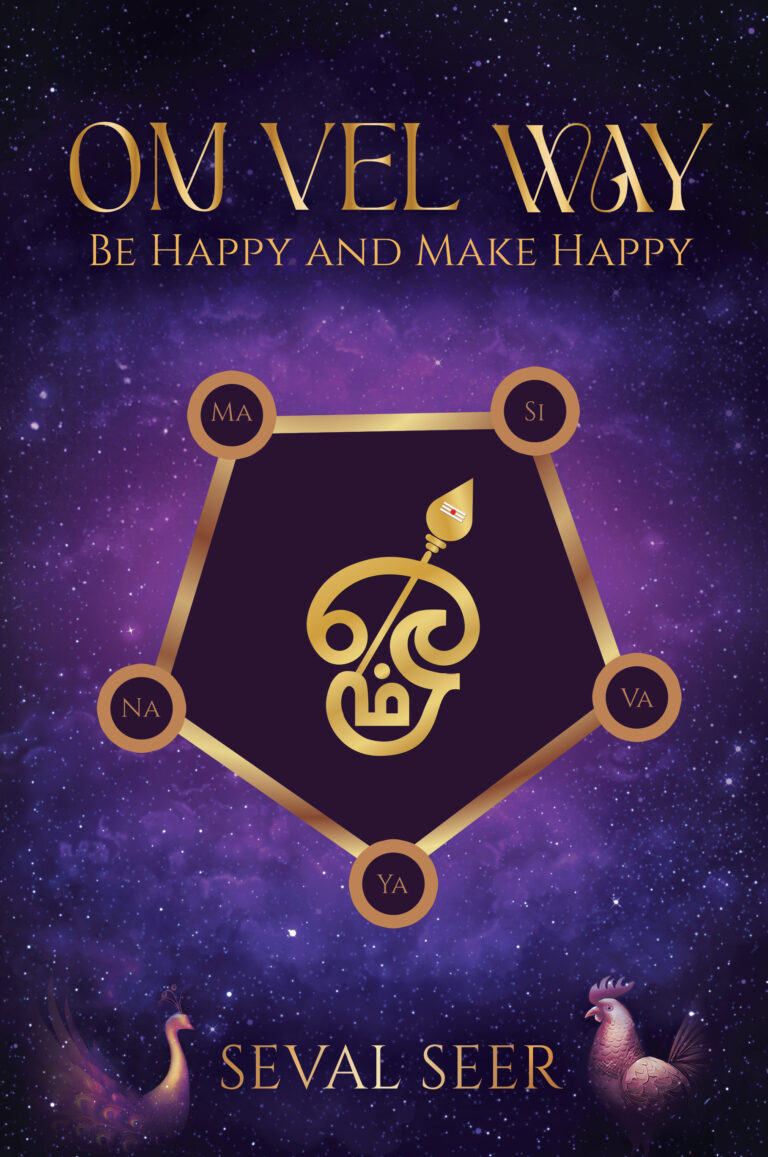OM VEL WAY: Be Happy and Make Happy is a conundrum. Author Seval Seer mixes spiritual insights and autobiographical details that sometimes approach the profound; but, in the eclectic survey of religious tracts, “translations” of ancient Saivite Hindu texts, psychological theory, and workaday self-awareness material that together stretch to almost 300 pages, they just as frequently get lost in the weeds.
Seer is a guru who, according to the biographical note on his website, had an existential crisis, and subsequently spent time “seeking answers to age-old questions that few people ask, and even fewer find answers to.” These questions involve basic notions of identity, motivation, and one’s direction in life. Finding answers entails an examination of self, soul, and spirit. “These are very deep and very subtle topics that have been explored across time, geography, and various fields of study,” Seer explains in the book: “This book is a synthesis of various works but with my interpretation and synthesis of them into a coherent view as I understood and experienced.”
There is no doubting Seer’s sincerity. He is careful to define key terms, such as the phrase “Ultimate Self,” which occurs 219 times in the book. He defines it as ‘“the Self that one truly is [which] forms the foundation, refuge and goal of self-actualization for the evolving Self.”
Fair enough. But a concern is the idiosyncratic way in which Seer interprets the mélange of texts covered in the book. He asserts that possible divergences between his interpretations of texts and their traditional interpretations are “irrelevant” because the book amounts to a personal view of spirituality, rather than an “interpretation for academic purposes.” This is honest, as is the admission that his “translations” differ from modern ones, and the statement (offered at regular intervals) that he is giving his personal “takeaway” on this or that book—rather than a more scholarly treatment. It does, however, feel at times like Seer is trying to have it both ways, insisting on the admissibility of his interpretations because they abide by “the spirit of the sources and their messages.” We are not quite in the realms of revealed truth here, but that particular hall of mirrors doesn’t seem all that far off.
What readers are left with, then, is a book of personal insights based on the author’s wide-ranging reading and experiences. Seer’s scientific influences are kaleidoscopic, but with a particular emphasis on Kierkegaard, Jung, Kurt Goldstein, and Abraham Maslow, whose hierarchy of need (1943) has long attracted Hindu scholars for its surface resemblances to the Taittirīya Upanishad. For apologetics, there is much grist for one’s mill here, and Seer embraces the similarities wherever he sees them. But this is not an apologetic book. It seems to work best as a personal journey through a faith, and, taken in that spirit, is an interesting (if uneven) read. Ironically, it is only when spiritual certainties come into view that it loses coherence.
Seval Seer’s OM VEL WAY: Be Happy and Make Happy covers a huge amount of ground in its exploration of Hindu spirituality.
~Craig Jones for IndieReader


